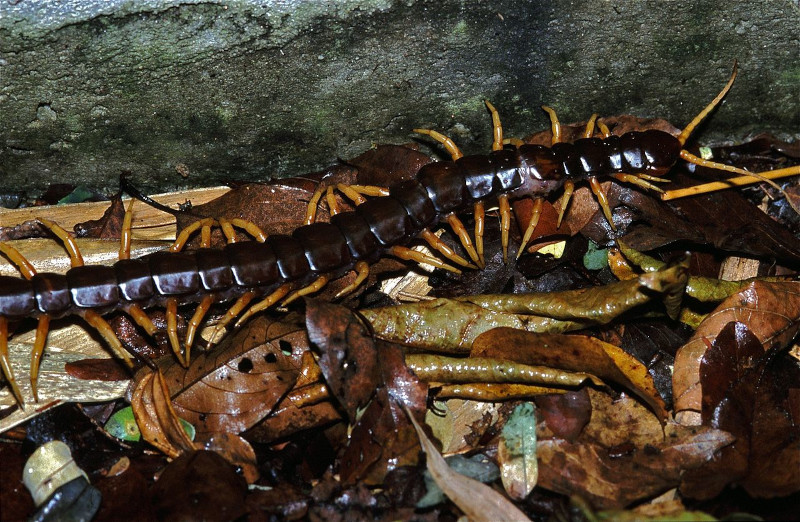Vietnamese Centipede Principle Facts
- The Vietnamese Centipede is super venomous. The venom can generate extreme pain, yet its toxin rarely causes life-threatening reactions.
- This particular species of centipede represents the only one to have a human fatality attributed to a bite (or maybe to allergic reaction). That is a dubious record to hold.
- Despite the common name, this arthropod inhabits more than just Vietnam. It actually lives in a fairly wide endemic range.
- For an arthropod, it possesses a rather long lifespan. Some individuals have lived for as much as ten years. In addition, achieving their complete growth can take almost 3 years.
Vietnamese Centipede Physical Description
Many consider the Vietnamese Centipede to be a remarkable species. In fact, some individuals reach a length of 10 in (25 cm) even though most do not exceed 8 in (20 cm) long.
The elongated body usually appears a reddish brown in color. Also, the multiple legs typically display yellow or yellow-orange in color. Their bodies grow elongated and segmented into 21 sections (not 100 as the name suggests).
The powerful venom is located in two modified legs, known as forcipules. These are tipped with sharp claws attached to glands containing the venom. The forcipules sit on the top of the head.
A flat shield protects the head, and also bears the two antennae.
The creature’s eyesight is extremely poor but it maneuvers well and moves rapidly by using the antennae and chemoreceptors.
- Kingdom: Animalia
- Phylum: Arthropoda
- Class: Chilopda
- Order: Scolopendromorpha
- Family: Scolopendridae
- Genus: Scolopendra
- Species: Subspinipes
Vietnamese Centipede Habitat and Ecology
Names mislead sometimes and this happens with the Vietnamese Centipede. Other than Vietnam, the animal also dwells in many forest regions of Southeast Asia. It has now spread to other regions with the same climate including Japan and Hawaii.
This terrestrial invertebrate typically lives under litter on the forest floor. You will also find it beneath stones or fallen logs, or in crevices, as well. Further, it generally only emerges on cloudy days.
The Vietnamese Centipede has a carnivorous nature. Consequently, it preys on a variety of insects, and even frogs, lizards, and rodents.
This species reacts aggressively by nature and can easily be disturbed.
It also molts once each year, until it attains full growth.
The arthropods numbers currently seem stable. Understandably, the IUCN lists them as a Species of Least Concern.

